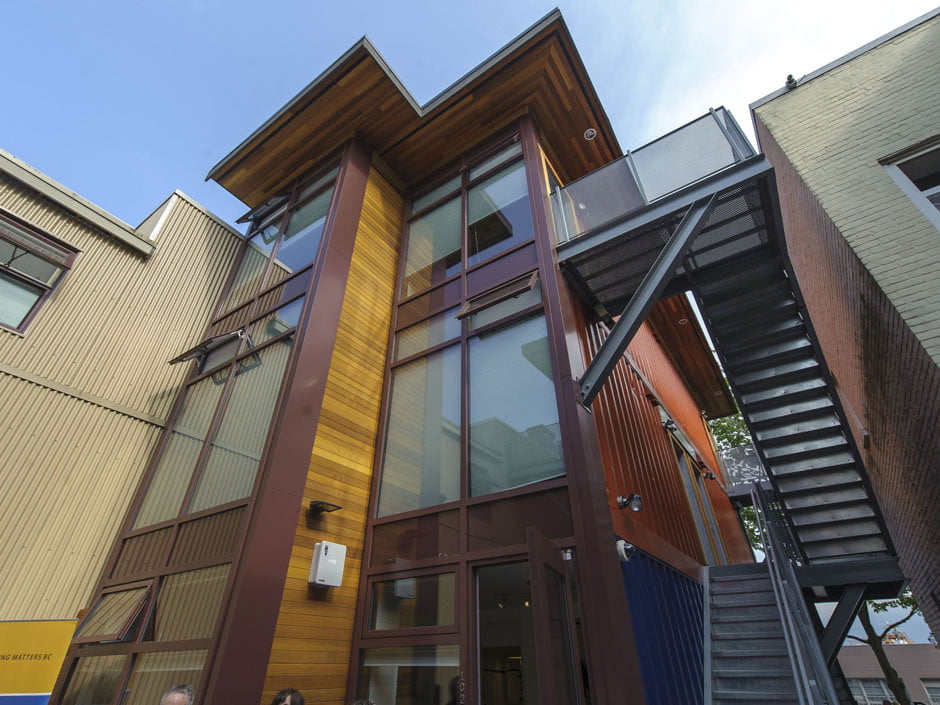When it comes to building a custom home, people can get pretty creative in order to save money and work with unique spaces.
BuzzBuzzHome wrote last year about the 8-room 420-square-foot apartment in Manhattan, which recently went on the market for $1 million. People have even lived inside a taxidermy bear (yes, really).But while those trends require a lot of imagination and some outside-the-box thinking, one home trend we can get on board with is “cargotecture,” or turning shipping containers into livable spaces. These steel intermodal containers are typically used to carry heavy loads, are meant to be stacked, and are made to withstand harsh conditions.
So why use shipping containers to build a home? Well, they’re cheap – prices start at $1,200 to buy a used container for a transportation company. They’re modular – they can be stacked and put into any combination of positions. And they’re plentiful – there are reportedly over 300 million shipping containers sitting empty at ports around the world. Here are a few ways shipping containers are being used for unique housing solutions:
Temporary workforce dwellings and offices
Shipping container homes are often used to house temporary workers, soldiers, and workforces in remote communities.
Companies like 3twenty Modular, which appeared on investment show Dragons’ Den, uses shipping containers to build modular workforce and office solutions. Founded in 2009, the company recently won its largest contract yet, a 180-man camp for Defense Construction Canada.
3twenty Modular’s shipping containers communities have been used to house trades workers in Saskatchewan, with workers each getting a two-room 40-foot-long bachelor pad (one worker was paying $1,050 per month in rent, compared to at least $1,500 for a traditional apartment).
Combining containers for traditional homes
When you think of a home made out of a shipping container you might think of the Boxcar Children, the book series about a group of kids who live in a train car. But wipe that image out of your mind and replace it with beautiful, architectural homes like these examples in places like New Zealand and Mexico. From a beach house in California to a modular eco-friendly home in Spain, shipping container homes are popping up all over the world thanks to architectural firms (and creative private citizens).
Here in Canada, the country’s first recycled shipping container social housing development was built last year in Vancouver and a residential designer in Victoria, BC used eight shipping containers to build his 2,000-square-foot family home.
An eco-friendly option
Ecopods is a Toronto-based company that’s looking to give people an eco-friendly alternative to a cottage, trailer, or vacation home. Their 8×20 eco-friendly homes are meant to be a separate workspace, a backyard oasis, or a place to go to recharge (with the 80-watt solar panel). The best part? You can transport it with you as you move homes.
Shipping container homes often incorporate alternative energy, solar panels, and other eco-friendly touches that aren’t affordable in traditional homes, so they’re great for someone who wants to reduce their environmental impact.
Need more examples of how shipping containers can become homes? Check out BuzzFeed’s list of treehouses, guest houses, and “log cabins” and get inspired.



